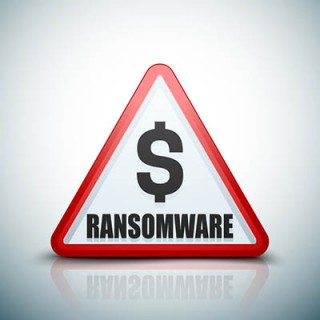Technology is a major factor that can determine your business’s fate, yet some organizations don’t necessarily recognize IT problems before they make themselves apparent. Unfortunately, by the time you notice any issues with your IT, they are usually turning into problems that cause your business considerable troubles. To keep issues from evolving into major problems, it’s up to you to ensure that your technology is maintained in a proactive fashion.
Infradapt Blog
A new study by Disaster Recovery on the state of data backup for enterprises yields some rather disappointing results, particularly when it comes to the percentage of companies not enacting data backup best practices. Companies that fail to continuously backup their data, or fail to even back it up at all, are gambling with their future.
A new malware swept across the globe Tuesday, incorporating facets of many ransomwares that have made headlines recently. While it originally appeared to be a variant of the Petya ransomware, it has been determined that it shares more in common with WannaCry. However, “NotPetya,” as it has been named, has a few additional features that experts say make it worse than either of its predecessors.
Why NotPetya Isn’t Really a Ransomware
The first clue that researchers had that NotPetya had a different motivation was the fact that the ransom only demanded the Bitcoin equivalent of $300. Secondly, the only means of getting the decryption key was to send an email to an address hosted by German email provider Posteo. Despite the lack of preparation the payment method appeared to have, NotPetya itself was clearly designed to be able to infiltrate as many networks as possible and do maximum damage once inside.
A Hybrid Hacking Attack
Since the attack commenced, researchers have ascertained that despite its initial similarities with Petya, NotPetya shares many traits with other malicious programs. Like WannaCry, the attack that affected much of Europe, NotPetya leverages EternalBlue. EternalBlue is a National Security Agency hacking tool that targets unpatched systems and steals the passwords that allow administrator access. In addition to EternalBlue, NotPetya also utilizes EternalRomance, another code that was stolen from the NSA.
Once NotPetya has infected one computer, it extracts passwords from its memory or the local filesystem to allow itself to spread--including onto updated and patched Windows 10 systems.
How To Protect Your Files
First off, don’t expect that you can retrieve your files just by paying the ransom. Even if those responsible for NotPetya intended to keep their word and return them once paid, Posteo has shut down the provided email account victims were to receive their keys from. As a result, unless a victim was already following certain best practices, their files are as of yet unrecoverable.
However, this does not mean that everyone is vulnerable to this attack. Before the EternalBlue and EternalRomance exploits were distributed on the dark web, Microsoft had already released patches for the vulnerabilities. However, if these patches were not applied, a user’s systems were (and are) still vulnerable.
The best method to avoid infection from this kind of attack is to ensure your users understand the importance of cyber security efforts, and that all of your business’ systems are reinforced against the latest threats by keeping your defenses up-to-date.
Furthermore, even an infected user is not without hope if they have been backing up their files. If they have done so, all they have to do is disconnect their computer from the Internet, reformat their hard drive and restore their data from their backup solution. However, for this to work, you have to also be sure that your backups are up-to-date, and that your backup is stored in an isolated location, separate from your network.
Infradapt has the experience and expertise to help prevent you from becoming a victim of a malware like this, whether we help you manage your backups or help educate your users to avoid attacks like these in the first place. Give us a call at 800.394.2301 today.
While it’s a security best practice to keep strangers off of your Facebook account, you might feel that it’s understandable to accept an unknown request for the sake of networking or otherwise. This isn’t the ideal way to approach Facebook, but you do have a unique opportunity to allow users to view your profile and follow your public posts, without the need to accept a friend request.
How much time is wasted in your workplace just trying to communicate about potential projects? The notable difference between productivity and stagnation is that one is making you money, while the other is costing you money. Employees spend about 80 percent of their time in meetings, on the phone, or responding to emails, so it falls on the business owner to ensure that communications are as easy as possible so minimal time is wasted.
There are different approaches to this problem. The first place where you can cut down on wasted time is the one that you likely have the most control over: meetings.
Let’s face it; sometimes meetings aren’t as productive as they should be. One way to keep this from happening is to consider how you can make more efficient use of everyone’s time. Start by making a plan and considering what exactly is on the agenda. Ask yourself what the purpose of the meeting is, and if the goal of the meeting could be fulfilled more effectively in another way. If the goal of the meeting can be achieved without collecting your entire workforce into the same room, consider doing so.
Once you have determined that the meeting is the most efficient way to achieve this goal, you want to ensure that you communicate the purpose of the meeting to all of those who must attend. This way, everyone knows what they need to get out of the meeting, and nobody will be confused about why the meeting is being held. This keeps wasted time to a minimum.
By remaining cognizant of what your meetings should accomplish, you’ll inevitably save time and even wrap your meetings up earlier. This can even change the way that employees view meetings. Instead of keeping a meeting going long enough to fill in the space on their schedules, they will see that they can get more done since the goal was achieved earlier than expected.
Another way that you can make your meetings more effective is by creating an outline and then sending the agenda out to everyone at least 24 hours in advance. This way, your workforce knows what they can expect, as well as put together their own notes for quality input throughout the meeting. Another way that you can use this to your advantage is send them something to have read before the meeting starts--in essence, assigning homework. By using these methods, your meetings will be less improvised and more focused.
Once the meeting has ended, you can ask your employees for feedback regarding the process. If you take the time to listen to all participants’ feedback, you can then use it to improve the process and meet goals even more effectively next time. Eventually, it will lead to a chain reaction where meetings go by faster and faster, to the point where you have the process down.
When it comes to streamlining any processes in your office, the right technology can make or break the effort. Technology can help you make your meetings more efficient by utilizing video conferencing or voice chat technologies, so that your team doesn’t have to be in the same place all at once. They can even dial in with their mobile devices from their current location.
This strategic approach to collaboration technology can help your organization thrive, as well as focus on creating more opportunities for profit. To learn more about how there are technology solutions specifically designed to improve collaboration, reach out to us at 800.394.2301.




